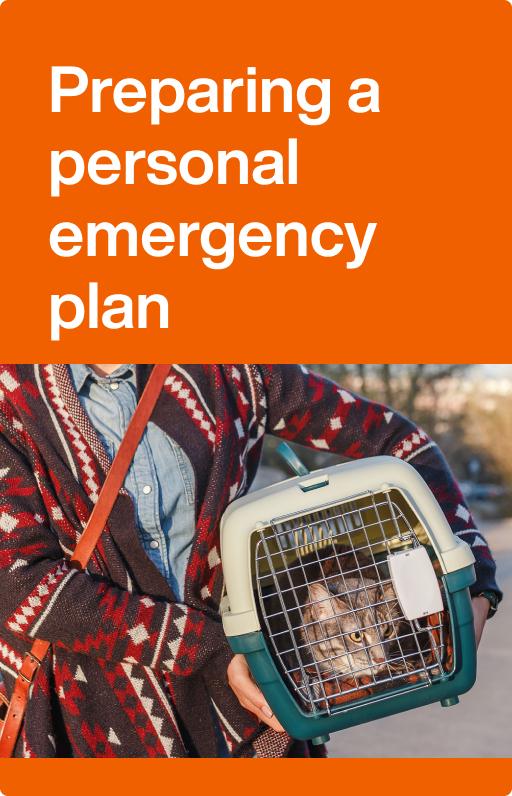Emergency advice: floods
You should understand the risk and know where to go if you’re affected.
What to expect from floods
Local flooding can occur at any time of the year and may be accompanied by heavy rain, strong winds, large hailstones and lightning. Floods can also impact infrastructure such as sewerage, electricity, roads, public transport and communication systems. You can help reduce the risk to you and your property from flooding.
Be prepared
Understand the risk of flooding to your property and know where to go if your property is affected.
Know who to call and have an emergency contact list ready, which should include 000 (triple zero) only for life-threatening situations and the State Emergency Service on 132 500.
Check you have adequate insurance cover for home and contents.
Develop a personal emergency plan, including an emergency kit and make sure everyone knows the plan.
When a flood warning is issued:
- identify the safest route to your nearest relief centre and plan to leave well before roads are closed from flooding
- get ready to move vehicles, outdoor equipment, garbage, chemicals and poisons to higher locations
- stack possessions, records, stock or equipment on benches and tables, placing electrical items on top
- secure objects that are likely to float and cause damage
- raise furniture, clothing and other valuables onto beds, tables and into roof spaces
- empty freezers and refrigerators, leaving doors open
- put sandbags in the toilet bowl and over all drains
- advise friends, family and your neighbours of your plans.
Tune into your local ABC radio station and listen for flood warnings and advice. Monitor Bureau of Meteorology weather alerts. These agencies monitor conditions and issue warnings about flooding.
During flooding
Never drive, ride or walk through floodwater.
Follow your personal emergency plan and any instructions from emergency services. Only evacuate when you are advised.
If you need to evacuate, ensure that along with your emergency kit you have packed warm clothing, essential medications, valuables, personal papers, mobile phone, photos and mementos in waterproof bags. If you can't take your pets with you, decide before evacuating how they will be looked after.
Turn off power, water and gas at the mains before you evacuate. When evacuating, lock your home and take the safest evacuation route from the area affected by floodwaters. Act early as roads may become congested with other traffic or closed due to flooding.
Where possible, keep in contact with your friends and family letting them know where you are and where you are going.
If you have information that could help others, get in contact with your local ABC radio station and tell them what you can see – reliable first-hand knowledge can help others in the community.
After flooding
Don’t return to your home until authorities say it is safe to do so.
When you do return home after being evacuated let your family and friends know where you are and:
- check for damage to windows, walls and roofs to ensure the building is structurally sound and be cautious of potential contaminants
- before you enter, make sure the electricity and gas are turned off and use a torch to carry out inspections inside buildings
- before you use electricity get a qualified electrician to inspect all power points, electrical equipment, appliances and electrical hot water systems that have been exposed to floodwater or water damaged in any way
- before you use gas connections, you should ensure gas appliances and gas bottles that have been exposed to floodwater have been inspected and declared safe to use.
Take lots of photos of any damage for insurance.
When you start cleaning up, wear suitable protective clothing such as boots and gloves. Be aware of any slip, trip or fall hazards, particularly fallen powerlines, damaged trees or any other hazards.
Have a supply of fresh drinking water. Until tap supplies have been declared safe all tap water needs to be boiled. Don't eat food or drink that has been exposed to floodwater and only use clean utensils and personal items.
Once you have secured your own home:
- check to see if your neighbours and family members need help
- do not go sightseeing as you may hamper the efforts of emergency services.
Review your personal emergency plan and update it with what you learnt from the previous flood event.
Further information about floods
The NSW SES website can help you develop:
The NSW government’s state flood plan details how emergency information is provided to agencies and service providers responsible for helping the community, particularly vulnerable community members, during flood events.
This information has been adapted from the ABC Emergency website and the NSW SES website.

